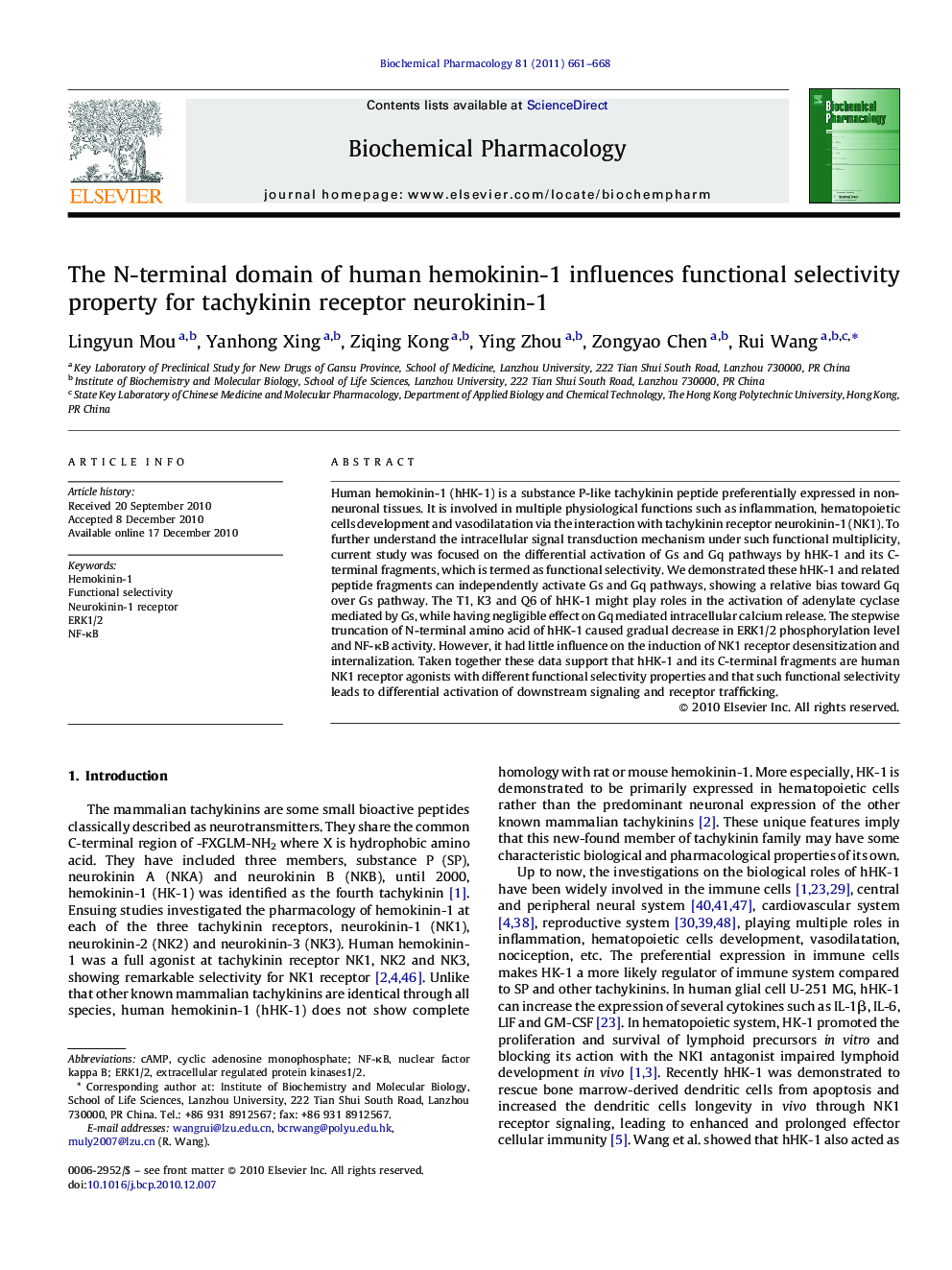| Article ID | Journal | Published Year | Pages | File Type |
|---|---|---|---|---|
| 2514189 | Biochemical Pharmacology | 2011 | 8 Pages |
Human hemokinin-1 (hHK-1) is a substance P-like tachykinin peptide preferentially expressed in non-neuronal tissues. It is involved in multiple physiological functions such as inflammation, hematopoietic cells development and vasodilatation via the interaction with tachykinin receptor neurokinin-1 (NK1). To further understand the intracellular signal transduction mechanism under such functional multiplicity, current study was focused on the differential activation of Gs and Gq pathways by hHK-1 and its C-terminal fragments, which is termed as functional selectivity. We demonstrated these hHK-1 and related peptide fragments can independently activate Gs and Gq pathways, showing a relative bias toward Gq over Gs pathway. The T1, K3 and Q6 of hHK-1 might play roles in the activation of adenylate cyclase mediated by Gs, while having negligible effect on Gq mediated intracellular calcium release. The stepwise truncation of N-terminal amino acid of hHK-1 caused gradual decrease in ERK1/2 phosphorylation level and NF-κB activity. However, it had little influence on the induction of NK1 receptor desensitization and internalization. Taken together these data support that hHK-1 and its C-terminal fragments are human NK1 receptor agonists with different functional selectivity properties and that such functional selectivity leads to differential activation of downstream signaling and receptor trafficking.
Graphical abstractFigure optionsDownload full-size imageDownload as PowerPoint slide
